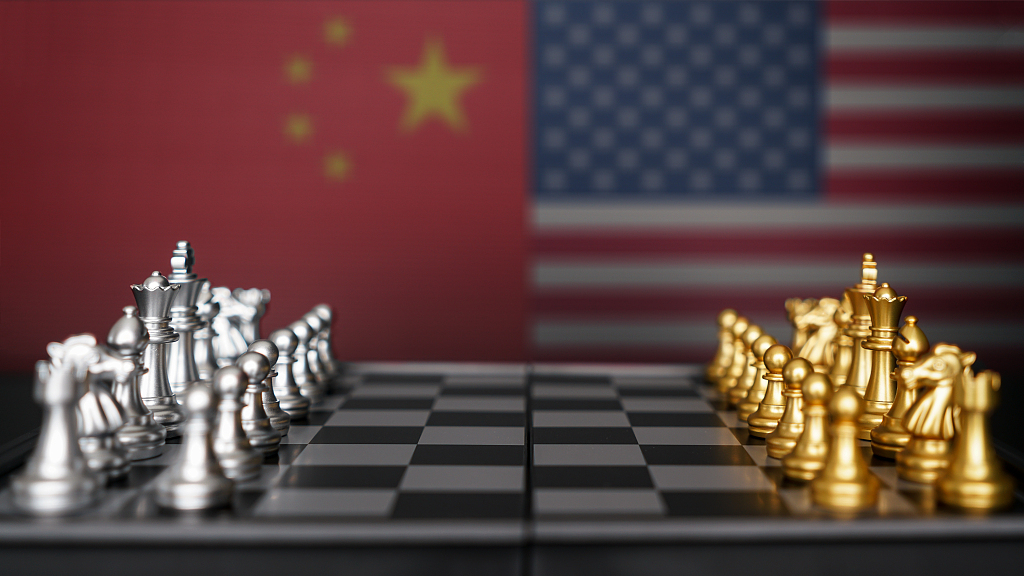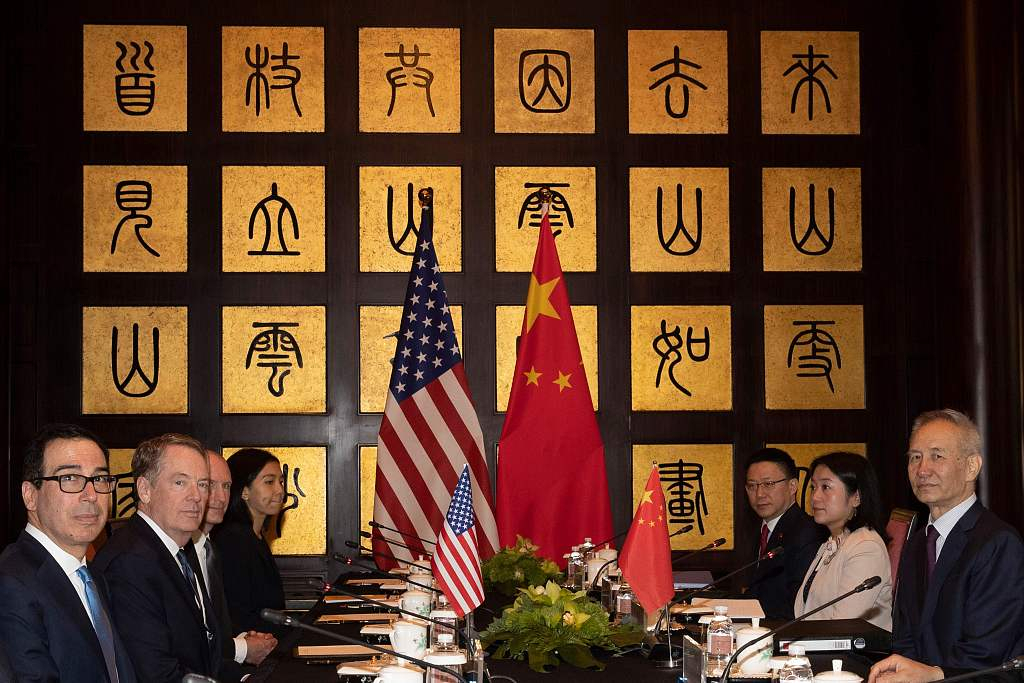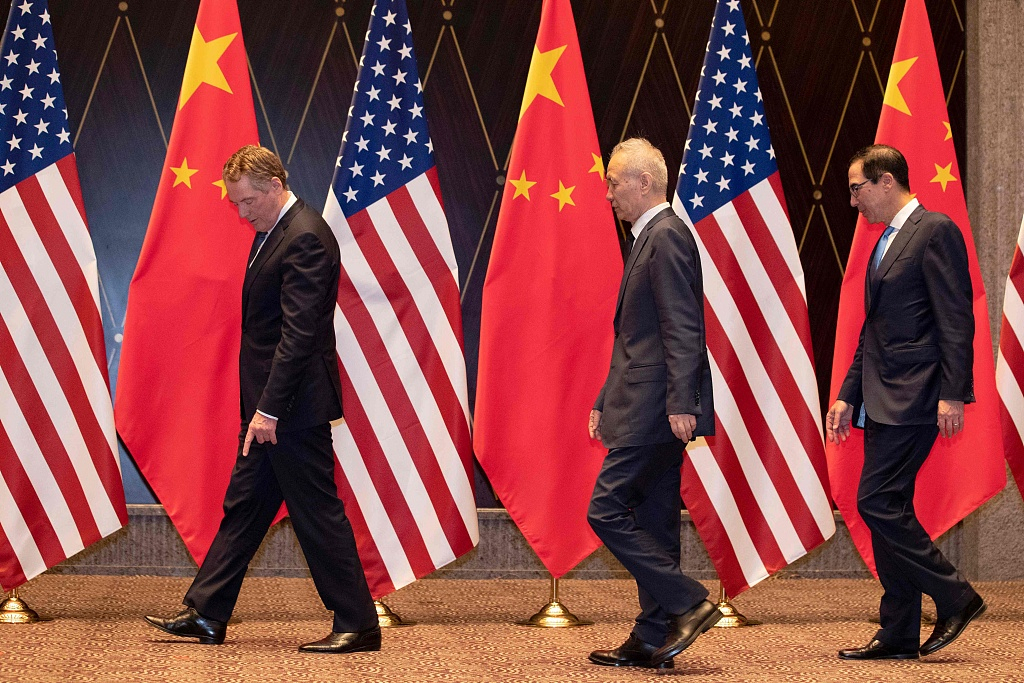

Editor's note: Azhar Azam works in a private organization as a market & business analyst and writes about geopolitical issues and regional conflicts. The article reflects the author's opinions, and not necessarily the views of CGTN.
Since the United States got embroiled in a hopeless trade war with China more than one year ago, the entire Beijing's counter-tariff measures have been retaliatory and not incendiary. The Chinese reciprocal actions in response to U.S. vexing tariff strategy could be termed as legitimate and defensive because they were shouldered to protect the interests of country and the people.
In late August, the sincere Chinese efforts to resolve the bruising trade dispute with calm attitude were met with Trump bitter riposte while claiming that Beijing wants "to make a deal badly."
And once again, the U.S. president snubbed China's reconciliatory tone to foil the escalation in trade war by allowing 15 percent tariffs on more than 125 billion U.S. dollars of Chinese goods to take effect from September 1.
China had no choice but to hit back. So in reprisal, Beijing also kicked off the previously announced additional up to 10 percent tariffs on 75 billion U.S. dollars targeted list of American goods including slapping 5 percent levy on U.S. crude oil and natural gas.
Since the start of the trade war between the two largest economies of the world, it is for the time that China has targeted the U.S. fuel.
Although historically, the U.S. companies had a very weak presence in Chinese oil market, still they were the fastest growing crude oil suppliers to China in 2018. Before the trade war, U.S. crude exports to China had bloomed to 510,000 barrels per day (bpd) in June 2018 before falling to mere 247,000 bpd in May 2019.

Chinese Vice Premier Liu He (R) with United States Trade Representative Robert Lighthizer (2nd L) and Treasury Secretary Steve Mnuchin (L) before the start of talks at the Xijiao Conference Center in Shanghai, China, July 31, 2019. /VCG Photo
So by continuing to cuff tariffs on Chinese goods, Trump's rash and consistently wacky moves sent the U.S. crude oil exporters in tatters that had just positioned themselves to fortify their footprints in the world's biggest 9.24 million barrels per day of Chinese crude market.
Given that China's crude oil consumption roughly accounted for 67 percent in 2017 and it is predicted that it will climb to 76 percent by 2030 – the reluctance of Chinese traders to buy American crude was always threatening to pitch anxieties in the U.S. crude exporters to China.
It is important to note that after the breakthrough trade talks with Trump at G20 summit in late June, Chinese President Xi Jinping had extended the promise to buy more U.S. goods including energy products such as crude oil and Liquefied Natural Gas (LNG).
But as soon as Trump dialed back from the trade truce and imposed 10 percent fresh tariffs on remaining 300 billion U.S. dollars of Chinese goods in early August, Chinese buyers of U.S. crude oil averred that they would not buy until Washington ceases tariffs and backtracks from stating China a "currency manipulator."
Meanwhile, China-U.S. trade tensions raised concerns about further hitting the global growth and demand for crude oil, Brent crude plunged 16 cents to 59.09 U.S. dollars a barrel by 1020 GMT while the U.S. benchmark WTI crude also slipped 7 cents to 55.03 U.S. dollars.
In addition, Trump's more than one year's use of force in trade with China has additionally pushed the U.S. energy companies to cut drilling rigs for a ninth-month in a row, to the lowest level since January last year.

U.S. Trade Representative Robert Lighthizer (L), Chinese Vice Premier Liu He(C) and U.S. Treasury Secretary Steven Mnuchin (R) are at the Xijiao Conference Centre in Shanghai, July 31, 2019. /VCG Photo
China is a step ahead of the United States. As Trump pursues adversarial economic policies, Beijing is shifting its reliance from manufacturing and exports to consumption-oriented growth.
Therefore, China does not need to target U.S. on trade; Trump's wrong economic path itself would lead the U.S. economy to cataclysm.
And do not forget that natural gas is China's fastest growing major fuel that's growth has quadruplicated in the past decade. It is the second-largest natural gas importer behind Japan and alone accounts for one-third of the global growth, thanks in part to its "Blue Skies" policy and strong drive to improve quality.
Again before the trade war, U.S. exported more than 17.5 billion cubic feet of LNG in April 2018 to China but no LNG vessel left the U.S. in May and June this year. As China has levied tariffs on U.S. LNG and LPG (Light Petroleum Gas) as well and the trade war is likely to prolong, Trump's frenzied strategy would toss up the world's largest producer of oil and gas (U.S.) from the biggest fuel market around the globe (China).
While Trump's thread "Chinese currency has gone down, which gives our importers a discount" in other words elaborates his retraction from labeling China a "currency manipulator," admitting the adverse fallout of his trade war – his tariff war have also shunned the doors of the U.S. crude oil and natural gas exports in China.
(If you want to contribute and have specific expertise, please contact us at opinions@cgtn.com)

Copyright © 2018 CGTN. Beijing ICP prepared NO.16065310-3
Copyright © 2018 CGTN. Beijing ICP prepared NO.16065310-3